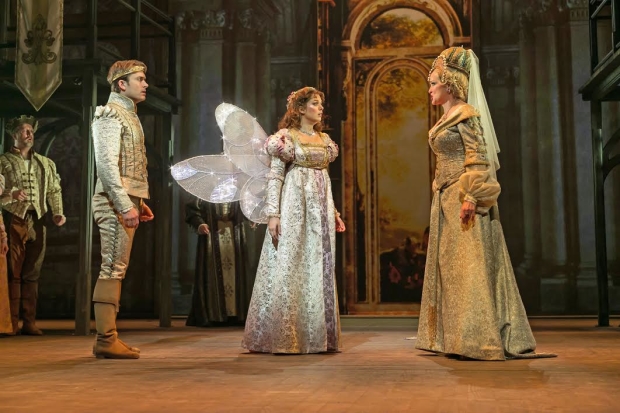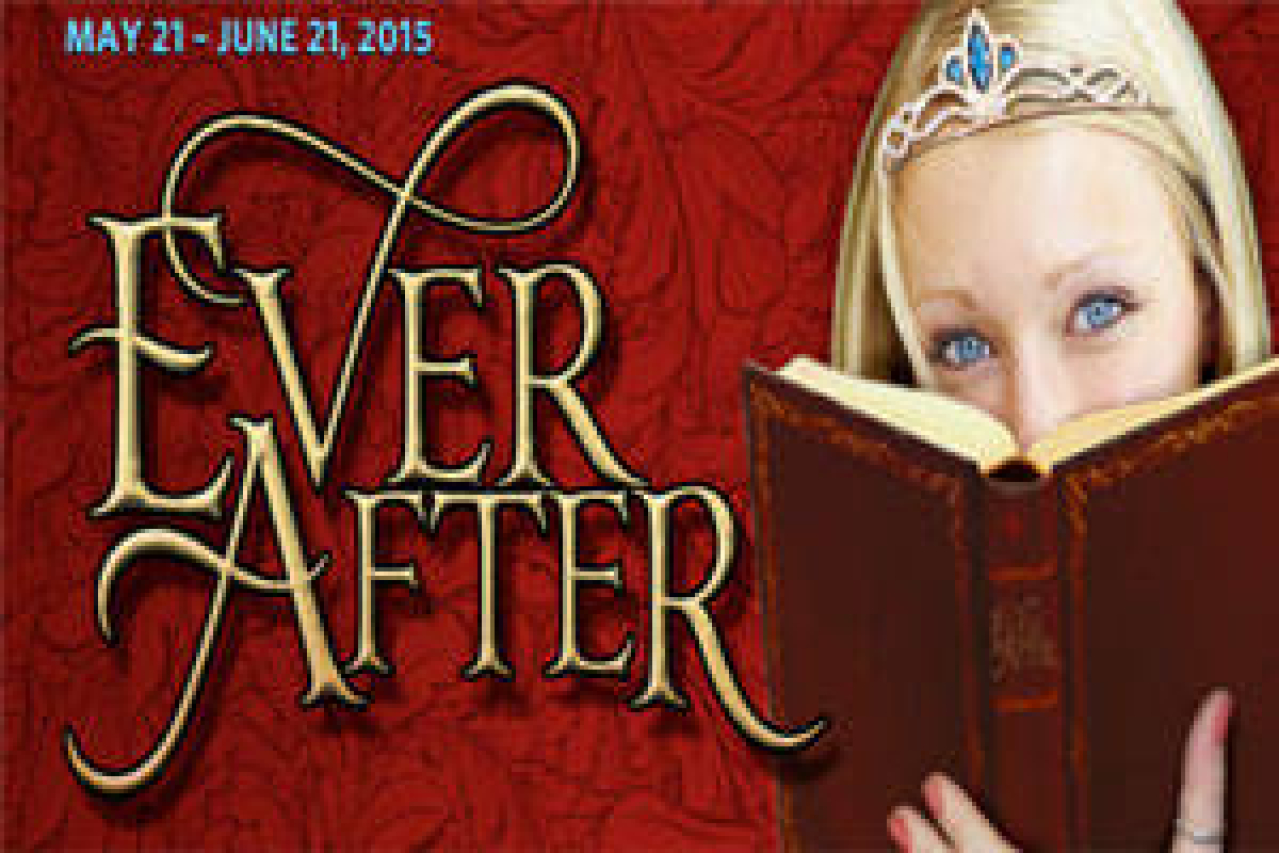Ever After

(© Jerry Dalia)
The folk tale Cinderella has been enchanting audiences since the 1600s, when Neapolitan poet Giambattista Basile and, later, French author Charles Perrault first spun their yarns of the young kitchen maid with a villainous stepfamily who becomes a princess with some help from magical sources. Disney's animated version helped define a generation in 1950, and seven years later, Rodgers and Hammerstein added songs for a television version, which was subsequently adapted for the stage. Its story has been told in just about every medium, from opera to ballet.
Now, there's Ever After, a new musical with music by Zina Goldrich and book and lyrics by Marcy Heisler (whose tune "Taylor, the Latte Boy," makes frequent cabaret rounds). It's based on a 1998 film perhaps best remembered for the striking image of a young Drew Barrymore in gossamer fairy wings. A revisionist take on the fable, Ever After is a Cinderella without fairy godmothers and pumpkins that turn into carriages. Instead, there's just a determined young orphan, a dashing prince who doesn't want to be told what to do, and Leonardo da Vinci.
Yes, Leonardo da Vinci. Ever After, receiving its world premiere in a production directed and choreographed by Kathleen Marshall at Paper Mill Playhouse, gives the classic a pseudohistorical, girl-powered makeover. Set in 16th-century France, the Cinderella character here is Danielle de Barbarac (Margo Seibert), orphaned at the age of 8 after the death of her father, and forced to live with his new family, the Baroness Rodmilla de Ghent (Christine Ebersole) and her daughters Marguerite (Mara Davi) and Jacqueline (Annie Funke).
Enter Prince Henry (James Snyder), heir to the throne of King Francis (Charles Shaughnessy of TV's The Nanny) and Queen Marie (Julie Halston). At first entangled in an arranged marriage to the Princess of Spain, Harry decides to strike off and find his own true love. Danielle happens to be an apple's throw away.
The production itself seems to be at odds with the material. Goldrich and Heisler have written a small, genial musical that Marshall sees as a big swashbuckling adventure. But nothing Marshall brings to the musical is all that big or adventurous. It's just a modest show being performed in a fashion that's way too large. At Paper Mill, this quiet work, with its lovely score, yearns to escape its confines the way Prince Henry desires independence.
The show itself really belongs to Snyder, who delivers a star-making performance. He's everything anyone could possibly want in a prince — charm and bravery, adventure and goofiness, with a voice to make any princess swoon. While his character is fully realized, Seibert's isn't, neither on paper nor in performance. Though Danielle is given lovely songs (and Seibert's delivery of the wistful "Who Needs Love?" and the ferocious "It's Done" are sterling), Danielle needs more brio to make her exciting. Seibert doesn't strike the right balance of pluck and winsomeness. And as a couple, the two never really get the romantic sparks flying like they should; together, they register more like BFFs than lovers.
The rest of the performances are a mixed bag. Sheldon brings warmth and wisdom to the role of da Vinci, and expertly delivers the production's most uproarious punch line. Stepsisters Marguerite (attractive, wicked, filled with self-obsession) and Jacqueline (pudgy, sweet, bursting with kindness) are well played by Davi and Funke. Ebersole's glorious soprano hasn't aged a day, but she's playing Mommie Dearest instead of the evil stepmother. And you have to wonder why Heisler didn't write in a single joke for extraordinary comic actors like Shaughnessy and Halston, who are stuck in the unfunny roles of the king and queen of France.
Marshall's production team has adopted her "bigger is better" mentality. Derek McLane's set — though nicely augmented by Peter Kaczorowski's lighting and pretty watercolor painting projections he designed with Olivia Sebesky — seems vast and empty in the smaller book scenes. In the costume department, with stray treads, odd hemlines, and an overall look of frumpiness, it looks as though Jess Goldstein and his team ran out of prep time. Nevin Steinberg's sound design goes for loud instead of natural, and even Marshall's choreography attempts to be larger than is necessary — the only major high-kicking production number to speak of, "All Hail the Gypsy Queen," feels incredibly out of place among the small emotional moments of the rest of the piece.
Goldrich and Heisler, on the other hand, have written an absolutely charming score, filled to the brim with clever lyrics and striking melodies that audiences will exit the theater humming. It's easy to admire their work, but one wishes that the entire creative team was on the same page.











